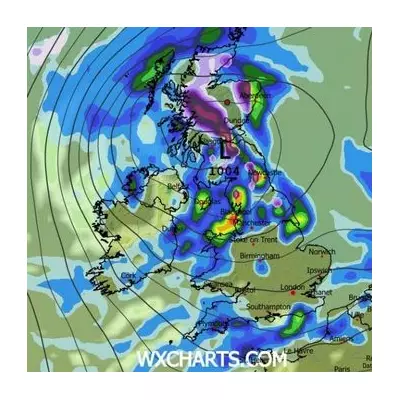
A powerful and moisture-laden Pacific storm system is poised to deliver a severe weather onslaught across California and the Southwestern United States this week, with forecasters issuing urgent warnings for potential flooding, heavy snowfall, and hazardous travel conditions.
The significant weather event, known as an atmospheric river, is expected to make landfall on Wednesday, concentrating its initial impact across Northern California before tracking southward. The National Weather Service (NWS) has highlighted a substantial risk of flash flooding, particularly for areas scarred by recent wildfires, where burn scars are highly vulnerable to mudslides.
Regional Impacts and Warnings
Northern California: The storm will first lash the San Francisco Bay Area and the Sacramento Valley. Sonoma County, among other regions, is under a Flood Watch, with forecasts predicting 3 to 5 inches of widespread rainfall. Coastal mountain ranges could see isolated totals exceeding 7 inches.
Southern California: By Thursday, the system will sweep into the Los Angeles and San Diego areas. Urban flooding is a major concern, with the NWS predicting 2 to 4 inches of rain for most coastal and valley areas, and up to 5 inches in the foothills.
Sierra Nevada: A major winter storm warning is in effect, with meteorologists predicting several feet of heavy, wet snow at the highest elevations above 5,000 feet. This will likely lead to treacherous driving conditions and possible road closures over key mountain passes.
Wider Southwest in the Path
The storm's reach will extend far beyond California's borders. States including Nevada and Arizona are also preparing for a bout of unsettled weather. Forecast models indicate heavy rain for parts of Arizona and significant snow accumulation for the higher terrain of Nevada, signalling a widespread weather event for the region.
Residents across the affected states are advised to closely monitor official forecasts from the National Weather Service, prepare for possible power outages, and seriously reconsider any non-essential travel during the peak of the storm from Wednesday through Friday.





